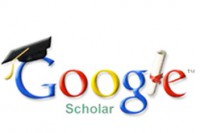Paragraph Writing of Academic Texts in an EFL Context
DOI:
https://doi.org/10.18196/ftl.1212Keywords:
Education, English Teaching, English LearningAbstract
This study aims to figure out EFL students’ procedure in developing paragraph and difficulties in paragraph writing during academic text accomplisment process. This current study was qualitative reseach which employed interview as the data collection method of the study. The participants of the study were eight students who were writing their skripsi as requirement for their undergraduate degree. The study was conducted in English Education Department of Universitas Muhammadiyah Yogyakarta. The result of the study showed that in developing paragraph of skripsi, students had insufficient efforts on brainstorming, planning and revising. They only concerned about drafting, and editing. Morever, related to the problems in paragraph writing, the students faced difficulties in English word and word choice, grammar, development of main idea, coherence and cohesiveness, effective sentence, and citation.
References
Abdulkareem, N, M.(2013). An Investigation Study of Academic Writing Problems Faced by Arab Postgraduate Students at Universiti Teknologi Malaysia (UTM). Theory and Practice in Language Studies, 3 (9), 1552-1557.
Afrin, S.(2016). Writing Problems of Non-English Major Undergraduate Students in Bangladesh: An Observation. Open Journal of Social Sciences, 4, 104-115
Ahmed, A. H. (2010). Students' problems with cohesion and coherence in EFL essay writing in Egypt: Different perspectives. Literacy Information and Computer Education Journal(LICEJ), 1 (4), 211-221.
Al-Khasawneh, F. M. S. (2010). Writing for academic purposes: Problems faced by Arab postgraduate students of the college of business. UUM. ESP World, 28(9).
Bakalis, M.(2003). Direct teaching of paragraph cohesion. Teaching History.110
Boardman, C.A. and Frydenberg, J. (2008). Writing to communicate: Paragraph and essays. (3rd.ed.). WhitePlains: Pearson Education, Inc.
Chidambaram, K. (2005). A study on the learning process of English by higher secondary students with special reference to Dharmapuri district in Tamilnadu. Language in India, 5: 161-170.
Connell, P. (2000). A Technique for Examining the Severity of Student Errors in Communicative English. The English Teacher, 3(2): 95-103.
Creswell, J.W.(2012). Educational Research: Planning, Conducting, and Evaluating Quantitative and Qualitative Research. Boston: Pearson.
Cumming, A.(2006). Goals for academic writing: ESL students and their instructors. Amsterdam: John Benjamins.
Fareed, M., Ashraf, A., Bilal M.(2016). ESL Learners’ Writing Skills: Problems, Factors, and Suggestions. Journal of Education and Social Sciences. 4(2): 1-10
Haider, G. (2012). An insight into difficulties faced by Pakistani student writers: Implications for teaching of writing. Journal of Educational and Social Research, 2 (3),17-27.
Hailemariam, W. (2011). Problems students face in Writing. AAU: MA Thesis (Unpublished).
Hussen, M. (2015). Assessing Students’ Paragraph Writing Problems: The Case of Bedeno Secondary School, Grade 10 English in Focus. Thesis. Haramaya University.
Kellogg, R. T. (2001). Long-term working memory in text production. Memory & cognition, 29 (1), 43–52.
Khairy, A(2013). Saudi English-Major Undergraduates' Academic Writing Problems: A Taif University Perspective. English Language Teaching; 6 (6).
Mayers, A.( 2006). Composing with Confidence – Writing Effective Paragraphs & Essays. 7thEdition. New York: Pearson Longman
Mustaque, S. (2014) Writing Problems among the Tertiary Level Students in Bangladesh: A Study in Chittagong Region. Language in India,14, 334
Oshima, A and Hogue, A.(2006). Writing academic English. Pearson Education: Longman Pineteh, E. A. (2013). The academic writing challenges of undergraduate students: A South African case study. International Journal of Higher Education, 3 (1), 12.
Rababah, G. (2003). Communication Problems facing Arab learners of English: A personal perspective. TEFL Web Journal, 2(1), 15-30.
Rao, Z. (2007). Training in brainstorming and developing writing skills. ELT Journal, 61, 100-106.
Santos, T. (2000). On the future of second language writing: The EFL/ESL split. Journal of Second Language Writing, 9(1), 8-10.
Tananart, O. (2000). The Survey of Errors in Written Work of Students Learning Fundamental English at Chulalongkorn University. Passa Paritasna. 18: 87-101.
Yakhontova, T. V. (2003). English academic writing: For students and researchers. USA: New York: Longman.
Zemach, D. E and Rumisek, L. A. (2005). Academic Writing: from paragraph to essay. MacMillian
Downloads
Published
How to Cite
Issue
Section
License
Copyright
Authors retain copyright and grant the journal right of first publication with the work simultaneously licensed under a Creative Commons Attribution-ShareAlike 4.0 International License that allows others to share the work with an acknowledgment of initial publication in this journal.
Authors are permitted and encouraged to post their work online (e.g., in institutional repositories, social media account, or on their website) after the article getting published in the journal, as it can lead to productive exchanges and earlier and greater citation of published work (See The Effect of Open Access).License
You are free to:
- Share — copy and redistribute the material in any medium or format
- Adapt — remix, transform, and build upon the material for any purpose, even commercially.
Attribution — You must give appropriate credit, provide a link to the license, and indicate if changes were made. You may do so in any reasonable manner, but not in any way that suggests the licensor endorses you or your use.
ShareAlike — If you remix, transform, or build upon the material, you must distribute your contributions under the same license as the original.
- No additional restrictions — You may not apply legal terms or technological measures that legally restrict others from doing anything the license permits.


.png)





